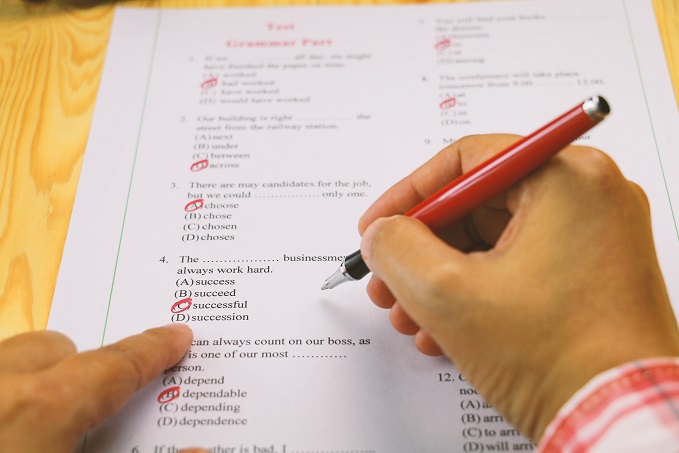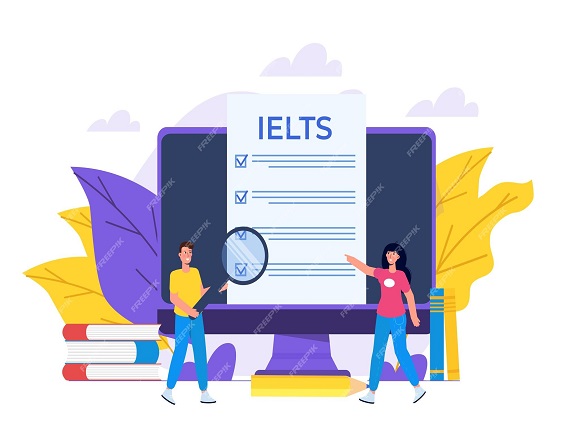Which IELTS test should I take?
Written by Alaa
Darwish
Are you looking for studying abroad? Do you want to work in a foreign country? So, this article is intended to you. All you need to know about IELTS and its test format are provided in this article.
Topics
included in the article:
Ø
IELTS test types
Ø
IELTS General
Ø
IELTS Academic
Ø IELTS test format
First of all, IELTS is an English test recognized by various organizations in different countries. Moreover, it is a must for those who want to study, work, or migrate in English-speaking countries. There are two types of IELTS tests:
1. IELTS Academic:
It is
suitable for university students who seek to study at an English-speaking
university. IELTS Academic can be taken in a test center (on paper or on
computer) or remotely online. Before booking your test, make sure to check
which formats of the test is accepted in your organization.
Keep in mind
that when taking IELTS at a test center, you can request to send your IELTS
results to a maximum of five organizations free of charge. There is a fee in
case you want to send your results to additional organizations. You can request
for your test center to send your results to your chosen organizations.
Taking IELTS online, you can send your IELTS results to as many organizations as you wish, with no additional fee. The results are provided in an electronic format.
2. IELTS General Training:
Differently,
IELTS General Training is required for applications to work in and migrate to
Australia, Canada, New Zealand and the UK. The test features everyday English
language skills that you will need in social and workplace environments. Interestingly,
this type of IELTS is also suitable for students, applying to study at an
English-speaking school or college below degree level.
Unlike IELTS Academic, IELTS General Training can only be taken in a test center on paper or on computer.
3. IELTS Test Format
For both types of IELTS, you take the same Listening and Speaking tests but different Reading and Writing tests. So, be careful and prepare for the correct test type.
The IELTS
tests of the Listening, Reading and Writing sections are completed in the same
day with no breaks in between them. However, The Speaking section may be
scheduled up to a week before or after the other tests. In case you booked
IELTS online, you will usually take your Speaking test before the other tests.
The total duration of Speaking test is 2 hours and 45 minutes.
v Listening section (30 minutes):
There will
be 4 recordings of English native speakers. You will listen to them, then, you
should write your answers to a serious of questions.
- Recording 1: a conversation between two people set in an everyday
social context.
- Recording 2: a monologue set
in an everyday social context, e.g. a speech about local facilities.
- Recording 3: a conversation between up to four people set in an
educational or training context, e.g. a university tutor and a student
discussing an assignment.
- Recording 4: a monologue on an academic subject, e.g. a university lecture.
Keep in mind
that you have to show your ability to understand the main ideas and detailed
information, the opinions and attitudes of speakers, and the purpose of an
utterance. In addition to your ability to follow the development of ideas.
There are
ten questions on each recording. The questions are designed so that the answers
appear in the order they are heard in the audio. Stay focused as the recordings
are heard only once. Moreover, they include a range of accents, including
British, Australian, New Zealand, American and Canadian. During listening, you
can take notes on the question paper. Then, you have 10 minutes after listening
to transfer your answers to an answer sheet. Care should be taken when writing
answers on the answer sheet as poor spelling and grammar are penalised. Each
question is worth 1 mark.
There is variety of question types in the IELTS test, such as chosen from the following: multiple choice, matching, plan/map/diagram labelling, form/note/table/flow-chart/summary completion, sentence completion.
v Academic Reading section
It consists
of 40 questions designed to test a wide range of reading skills. These include
reading for gist, reading for main ideas, reading for detail, skimming,
understanding logical argument and recognising writers' opinions, attitudes and
purpose.
In the test,
you will find 3 long texts range from the descriptive and factual to the
discursive and analytical. These are taken from books, journals, magazines and
newspapers. The duration of the test is 60 minutes for 3 reading passages.
A variety of
question types are used, chosen from the following: multiple choice,
identifying information, identifying the writer’s views/claims, matching
information, matching headings, sentence completion, summary completion,
flow-chart completion, diagram label completion and short-answer questions.
v General Training Reading:
Like Academic reading, General Training reading consists of 40 questions divided into 3 sections. Its duration is also 60 minutes. Section 1 may contain two or three short texts or several shorter texts. Section 2 comprises two texts. In Section 3, there is one long text.
v Academic Writing section
It consists
of 2 tasks:
In the first
task, you will be presented with a graph, table, chart or diagram and asked to
describe, summarise or explain the information in your own words. For example,
you may be asked to describe and explain data, describe the stages of a
process, how something works or describe an object or event.
In task 2, you will be asked to write an essay in response to a point of view, argument or problem. Be careful that responses to both tasks must be in a formal style.
v General Training Writing section
The tasks of this section are the same as the previous section except the style in which you write. You are free to write in a personal, semi-formal or formal style. The test lasts for 60 minutes.
v Speaking section
Before introducing this section, you need to know that the
Speaking test is to assess your use of spoken language. That's why every test
is recorded. It is divided into 3 parts:
- Part 1: you will be
asked general questions about yourself and a range of familiar topics,
such as home, family, work, studies and interests. This part lasts between
four and five minutes.
- Part 2: you will be
given a card which asks you to talk about a particular topic. Then, you will
have one minute to prepare before speaking for up to two minutes. The
examiner will then ask one or two questions on the same topic.
- Part 3: you will be asked further questions about the topic in Part 2. These will give you the opportunity to discuss more abstract ideas and issues. This part of the test lasts between four and five minutes.
In
conclusion, the article has tackled in detail all information about IELTS and
its major types. In addition to the test format of each type. Now you can
easily choose which type best meets your requirements. Study hard and get ready
to pass your IELTS test.










